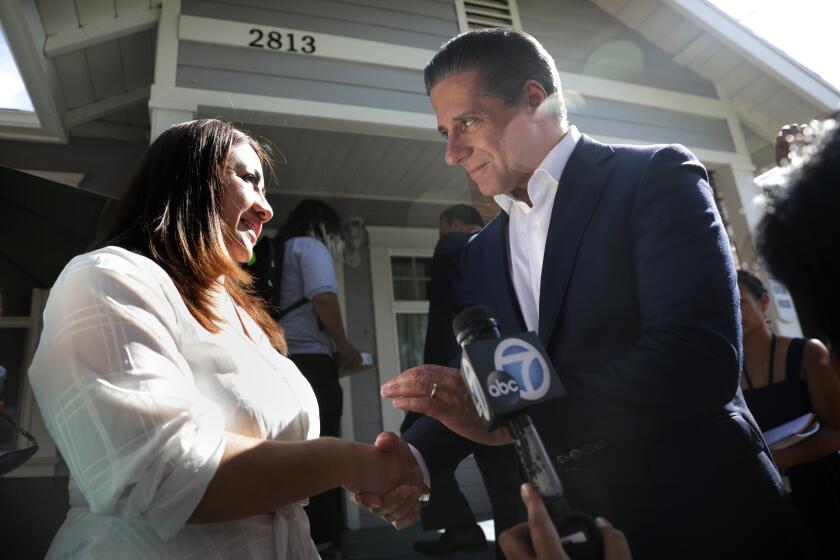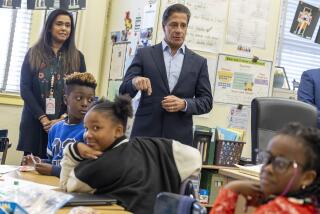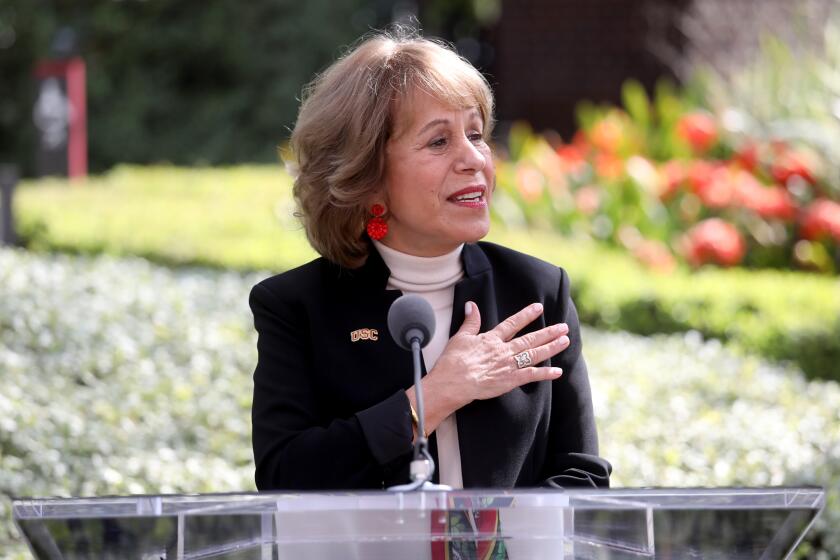Families hoping for near-normal school year as classes begin throughout L.A. area
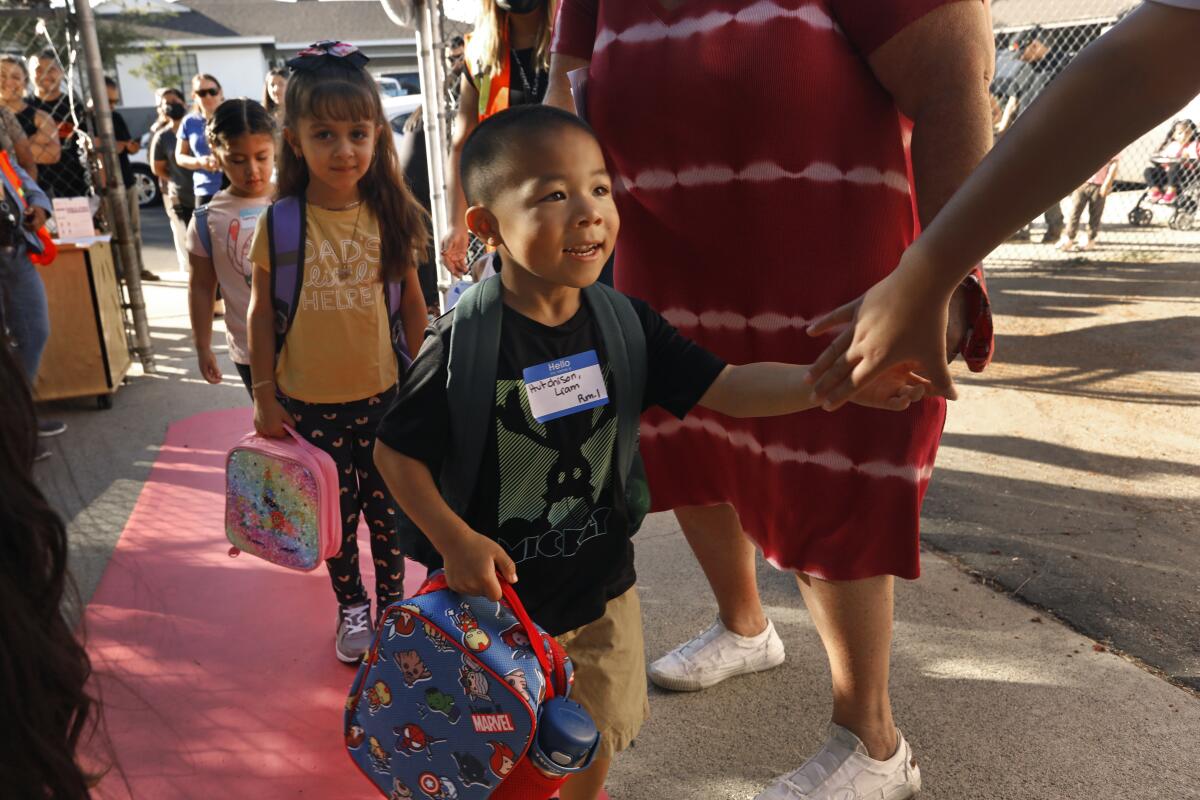
With a car full of students to drop off at school Monday morning — her high school daughter and three sons in elementary school — Lola Medina was feeling “ a little overwhelmed” with the new back-to-school routine. But she was comforted by a sense that things seemed more organized after so much pandemic disruption.
She liked that her children would be getting lessons to develop their social skills. And it helped that she didn’t have to buy any school supplies — the school gave them to students.
“I have a lot of hope,” she said as she dropped off her sons at Plummer Elementary School in North Hills. Balloon-festooned tables and fresh coffee greeted parents who were welcomed on campus — a markedly different scene from last year when they were generally restricted from campuses across the school system to help prevent the spread of the coronavirus.

“We want to welcome all the parents back,” said Principal Ibia Gomez. “We want them to feel that they’re part of the team.“
As the new school year began in Los Angeles and several other districts across California on Monday, the first bell rang in later start times in middle and high schools, districts stepped back from pandemic safety measures and many campuses had increased security in response to the mass shooting at an elementary school in Uvalde, Texas.
Educators and families throughout the region expressed optimism for near-normal times even as they enter the third academic year amid a global pandemic. The work of academic recovery and efforts to provide mental health services are priorities — as schooling last year continued to be disrupted by COVID-19 related absences among students and staff.
L.A. Unified Supt. Alberto Carvalho, who spent the morning visiting schools and classrooms and riding buses with students, promised a “year of acceleration.”
The district has seen significant drops in reading and math performance on statewide standardized tests. It is also facing an attendance crisis — with nearly half of all students chronically absent last year.
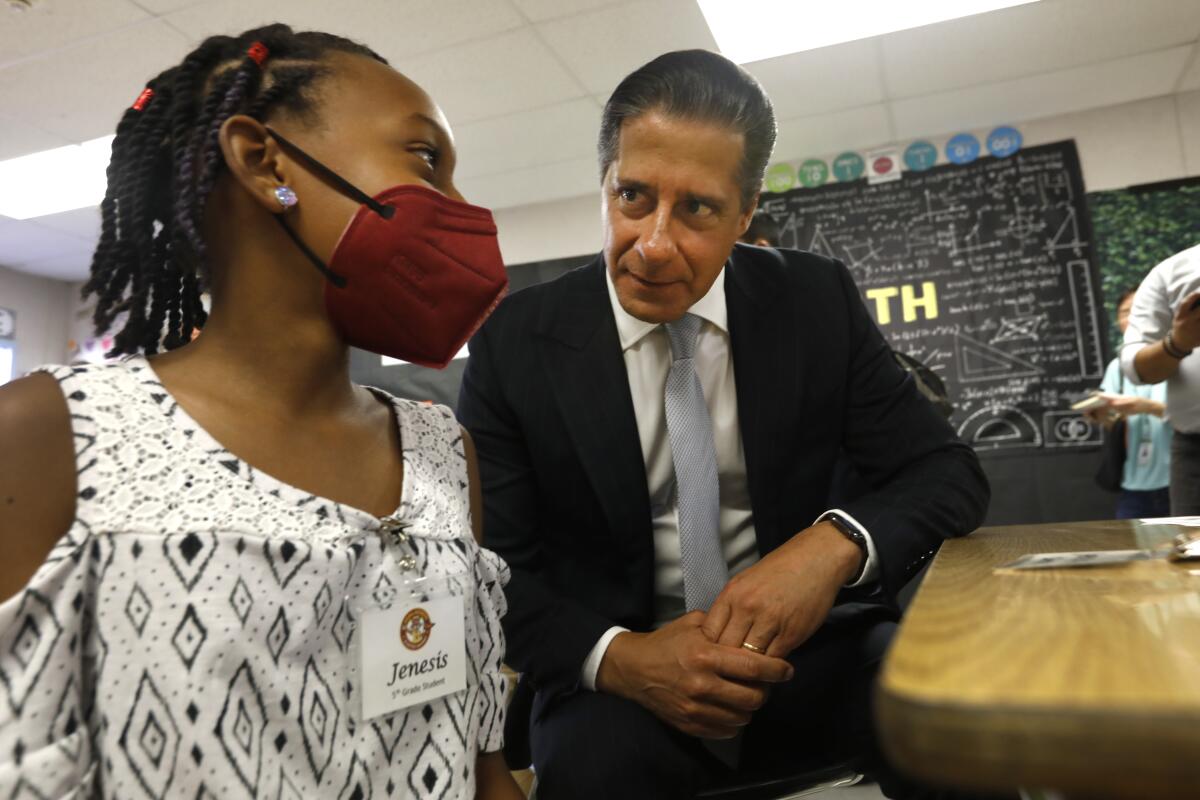
“I’m seeing nothing that would tell me that this is going to be nothing but a smooth opening of the school year,” Carvalho said. “Now, what I do need is parents to get their kids to school... I cannot teach the kid who’s not in school.”
Redondo Beach schools Supt. Steven Keller urged patience and perspective.
“A little gratitude and kindness toward the custodians, office staff members, teachers, support staff members and administrators goes a long way,” he said.
Later start time
A law that took effect July 1 made California the first state to require later start times — based on research suggesting that the adolescent brain needs to sleep in more to operate more effectively. As a result, middle school can begin no earlier than 8 a.m. and high school no earlier than 8:30 a.m. Elementary school start times do not fall under the law.
Critics include coaches who worry about darkness encroaching on practices and competitions as days grow shorter. And some predict that students will simply stay up later, and arrive to school just as groggy as before.
Los Angeles brings its own wrinkle to the question. Traffic in L.A. is generally lighter during the summer and clogs considerably when the L.A. Unified School District returns to full operation. Many buses and parents will be on the road later. And the city’s workforce may be hard-pressed to adjust their hours.
In another pandemic school year, parents hope their children progress in academics, mental health and development. Many remain concerned amid more relaxed COVID measures.
“How are working parents supposed to drop kids off at the school?” said Nelson Alarcon, who has an 11th-grader at Hamilton High on L.A.’s Westside. “Are they going to offer early school programs or opening school earlier?”
School districts have new state funds to provide up to nine daily hours of academic and enrichment services — during and outside of school hours — especially to students with high needs. School systems have struggled, however, to staff these full-day programs.
COVID-19 and monkeypox precautions
Weekly coronavirus testing has ended in L.A. Unified. Like most other school systems, L.A. officials have chosen to align with county health rules — and no longer are considering whether they want to exceed them.
L.A. officials announced that rapid-response antigen tests were available to all students and staff before Monday’s start of school. District Medical Director Dr. Smita Malhotra encouraged everyone to test, but noted that baseline testing before the start of school was not required.
However, parents and staff are required to notify the school district of a positive test — which will result in an isolation period of at least five days. After that, a negative test and resolving symptoms can allow a person to return to campus. Continued masking is required of employees until at least 10 days after the positive test. Masking is recommended but not required for students after they are eligible to return.
After being significantly exposed to a person with COVID-19, students and employees must mask for 10 days but can come to school provided they have no symptoms. You are a “close contact” if you were less than six feet away from an infected person for a total of 15 minutes or more over a 24-hour period. An infected person can spread the virus starting two days before having symptoms as well as two days before testing positive.
L.A. County health and district officials continue to strongly recommend that everyone wears masks indoors until community transmission recedes further.
Parents remain divided on whether COVID-safety measures go too far or not far enough.
But no one with symptoms of illness should go to school.
This admonition from the L.A. County Health Department also newly applies to students with rashes — amid concerns about monkeypox. Officials said the odds of children contracting monkeypox are exceedingly low — to the point that parents should not be concerned about transmission at school.
“There are many common rashes in children,” L.A. County Public Health Director Barbara Ferrer said last week. “And the risk of monkeypox in children is currently extremely low. However, parents should contact their child’s pediatrician or medical provider if any new, unexplained rash appears.”
She added: “The child should be kept at home and the rash is covered until the doctor is consulted. You should encourage children to avoid touching the rash as much as possible and help them practice good hand hygiene.”
Nearly half of L.A. students were chronically absent last year. Educators say they must bring children back to class.
Post-Uvalde security
All L.A. school staff will have available an app that allows for fast reporting of a security issue. Also, every campus has had a safety review to make sure access is as restricted as possible — limiting entry to campuses and keeping doors locked, said L.A. schools Supt. Alberto Carvalho.
Security cameras had already been in place at many school buildings, but a post-Uvalde evaluation resulted in adding more cameras — where officials concluded they could be helpful.
The deployment of police remains controversial — with L.A. student activists and the teachers union leadership calling for the elimination of school police. A school board majority approved major cuts to the department in June 2000, but declined to make further reductions for this year.
Anti-police activists cite the ineffectiveness of officers during the mass shooting in May in Uvalde, where hundreds of law enforcement personnel waited in confusion outside the classroom occupied by the shooter and his victims.
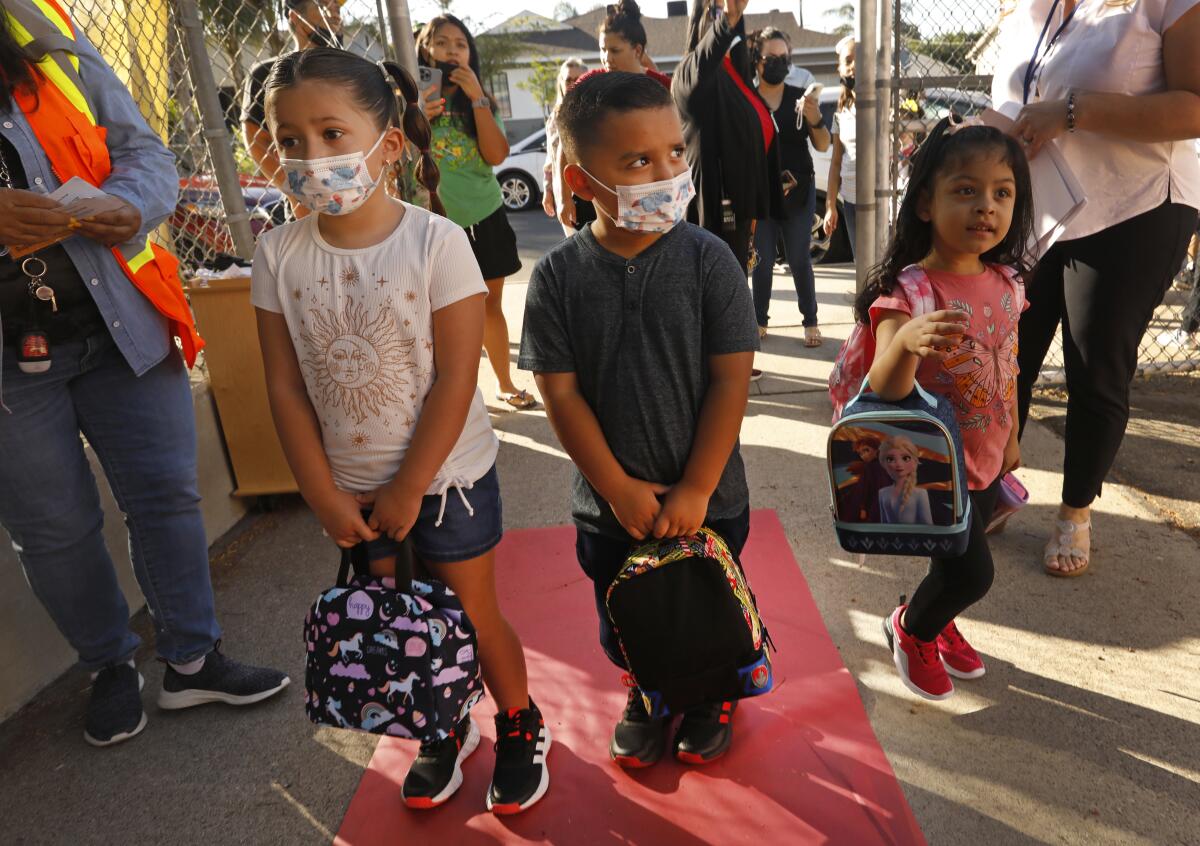
Gil Gamez, the leader of the L.A. school police officers union, has insisted that school officers in California are trained more effectively — and under orders to put themselves in harm’s way at the first sign of trouble to protect students.
Academic and mental health help
California school districts have extra funds to provide academic and mental heath support amid the pandemic but have had trouble filling staff vacancies.
The work at Maclay Middle School in Pacoima typifies the efforts many schools are undertaking to help students.
“We have after-school tutoring lined up,” Assistant Principal Tatiana Duran said last week as the campus prepared for opening. “We have Saturday school lined up. Today we’re meeting with a team of teachers [who are] going to help us with the intervention. We have all the assessments lined up so that we can look at that data early — the second week of school — to drive our academic plan.”
Instructional specialist Norma Rodriguez has helped Maclay set up a new college and career elective class. That course, like many at the school, is supposed to incorporate social and emotional learning goals. All teachers at the campus have received special training in dealing with behavior issues as well as in reaching detached, disengaged students.
More to Read
Start your day right
Sign up for Essential California for news, features and recommendations from the L.A. Times and beyond in your inbox six days a week.
You may occasionally receive promotional content from the Los Angeles Times.

